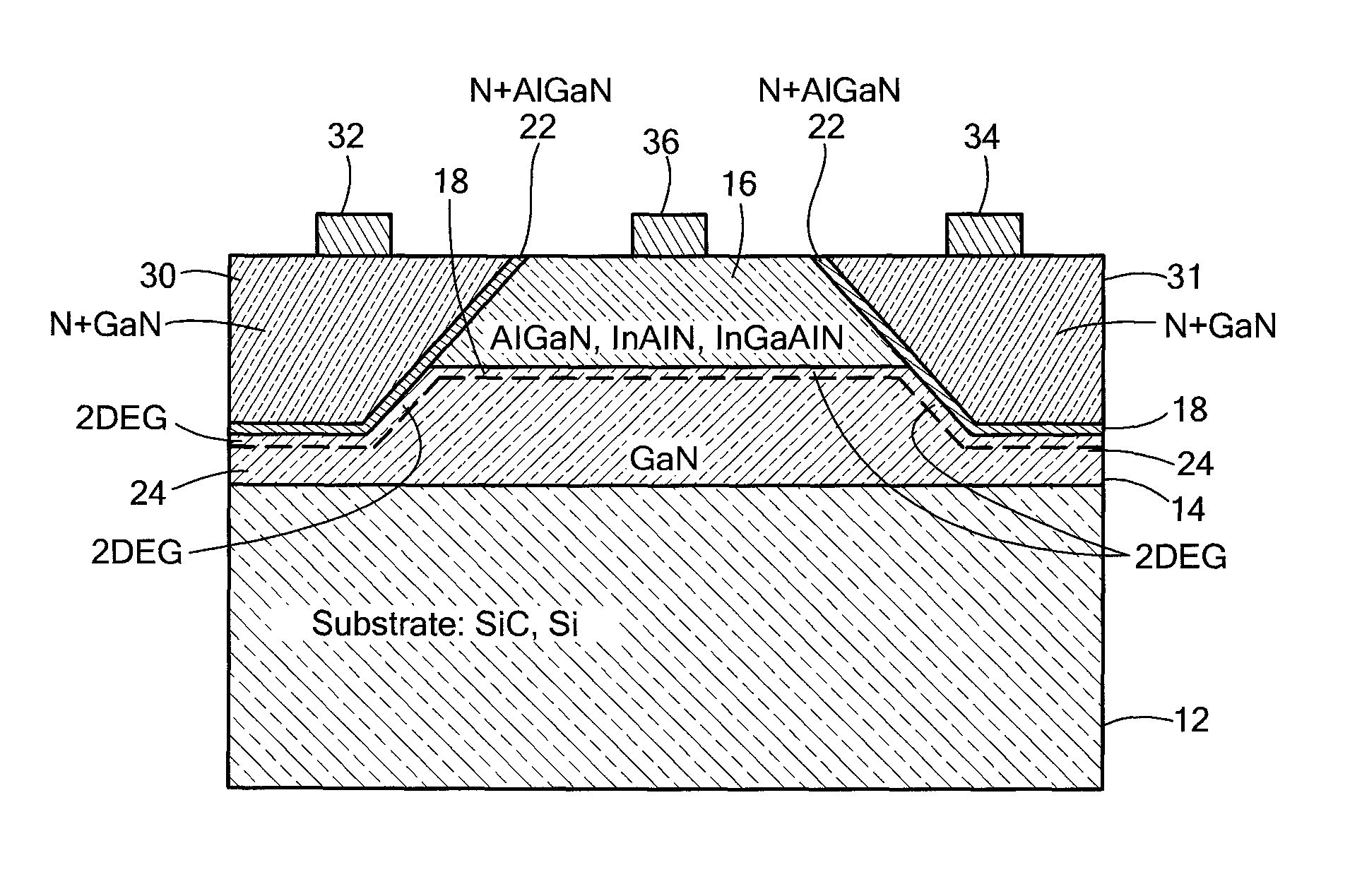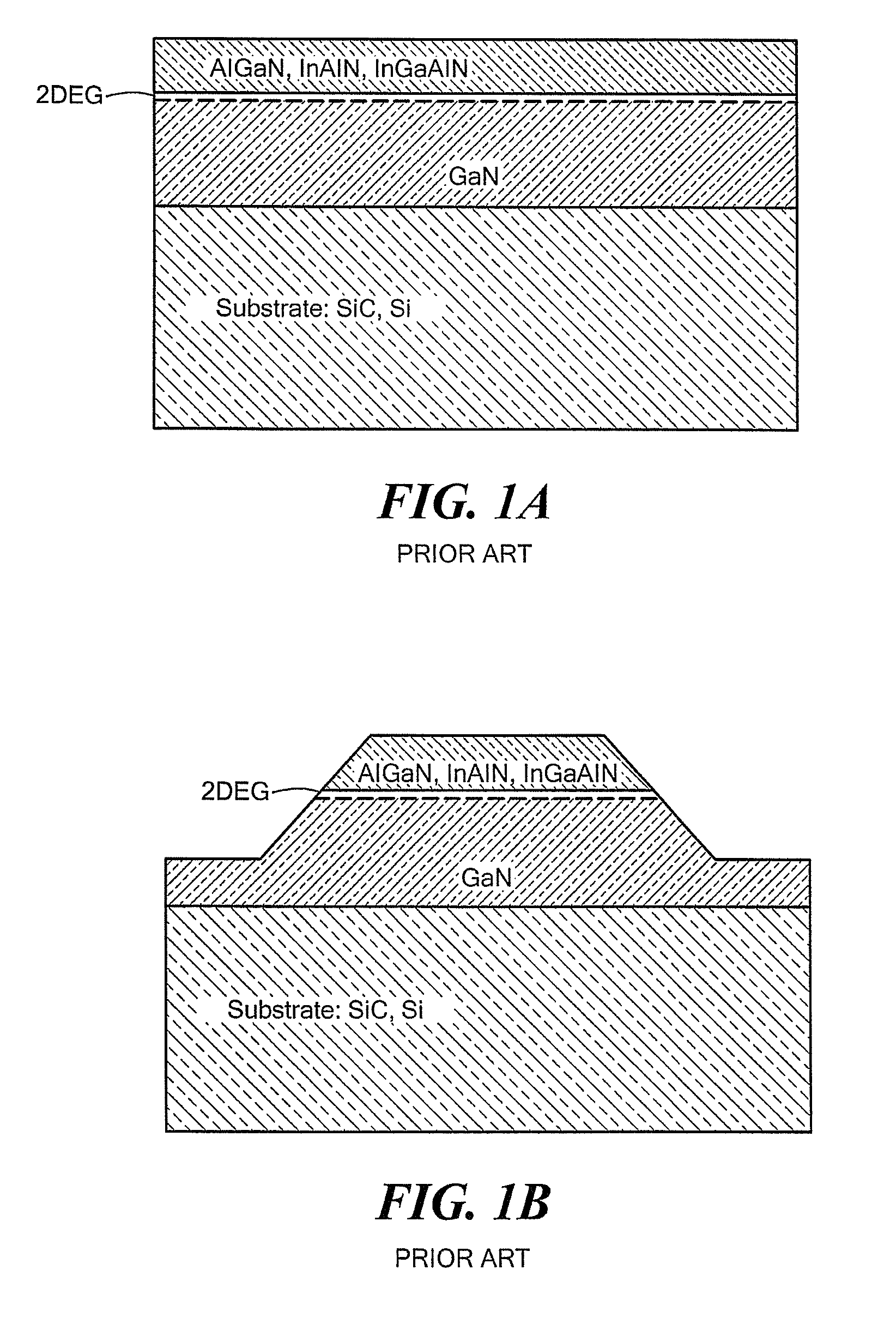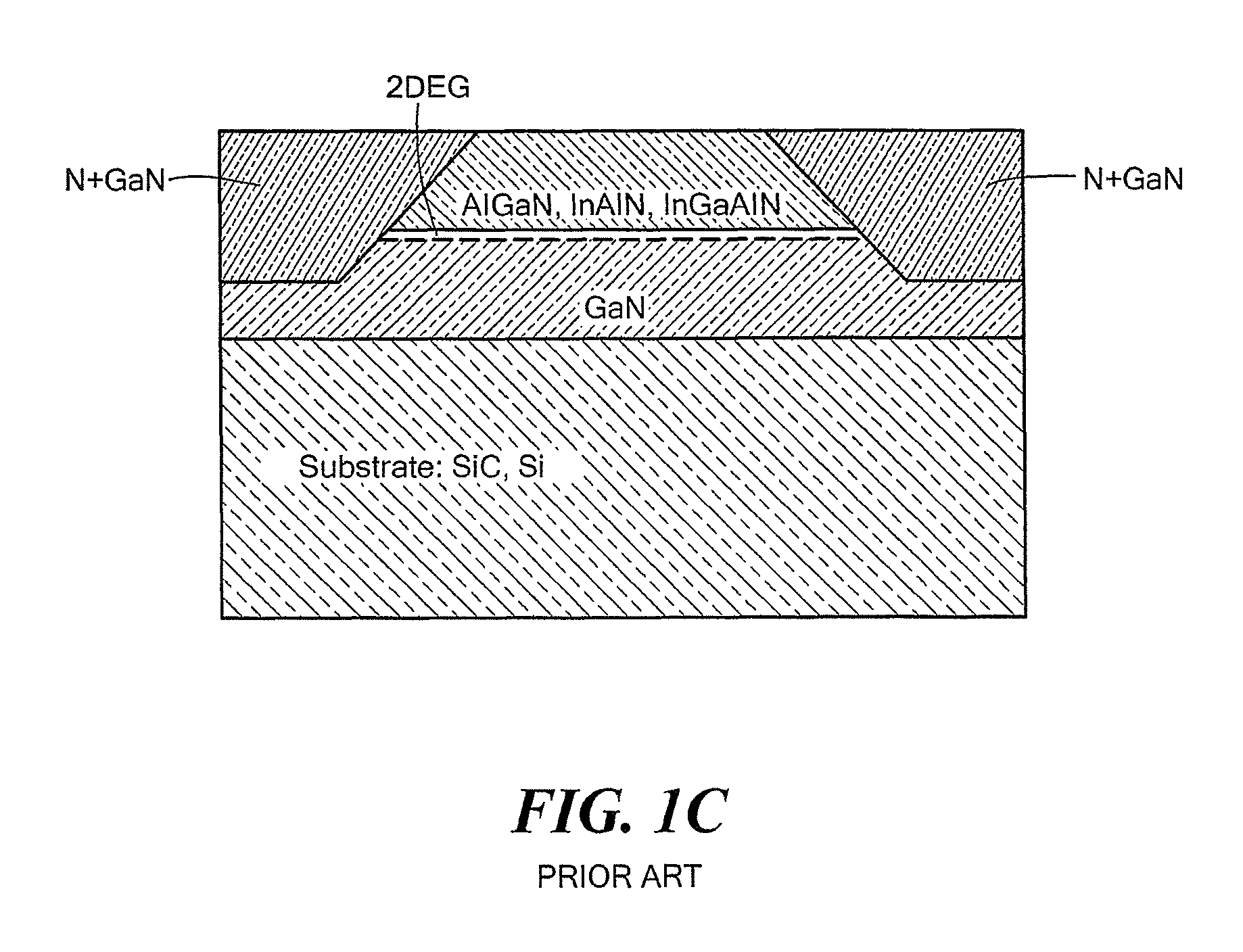Gallium nitride devices having low ohmic contact resistance
a technology of gallium nitride and semiconductors, applied in the direction of semiconductor devices, basic electric elements, electrical equipment, etc., can solve the problems of compromising the carrier concentration and mobility of electrons, high ohmic contact resistance (>0.2 ohm mm), and reducing the yield of source/drain contact spacing of =2 um, so as to achieve the effect of low ohmic contact resistance, and high electron mobility transistor transistor
- Summary
- Abstract
- Description
- Claims
- Application Information
AI Technical Summary
Benefits of technology
Problems solved by technology
Method used
Image
Examples
Embodiment Construction
[0021]Referring now to FIG. 2A, a semiconductor structure 10 is shows having: a substrate 12, here a semiconductor substrate of silicon carbide (SiC) or silicon (Si), for example. A lower layer 14 of gallium arsenide (GaN) is formed, by any conventional manner on the substrate 12. An upper layer 16 of aluminum gallium nitride (AlGaN), or indium aluminum nitride (InAlN) or indium gallium aluminum arsenide (InGaAlN) is formed on the lower layer of gallium arsenide (GaN), as shown. Because the upper layer has a higher band gap than the lower layer, a two dimensional electron gas (2DEG) region 18 is formed between the upper and lower layers 14, 16.
[0022]Next, the structure 10 shown in FIG. 2B is masked and dry etched to form a mesa structure 20 shown in FIG. 2B. Here, the structure 10 shown in FIG. 2A is etched to a depth from 300 Angstrom to 1000 Angstrom (preferably 600 Angstrom).
[0023]Next, as shown in FIG. 2C, an additional electron donor N+ layer 22 of AlGaN with Al concentration i...
PUM
 Login to View More
Login to View More Abstract
Description
Claims
Application Information
 Login to View More
Login to View More - R&D
- Intellectual Property
- Life Sciences
- Materials
- Tech Scout
- Unparalleled Data Quality
- Higher Quality Content
- 60% Fewer Hallucinations
Browse by: Latest US Patents, China's latest patents, Technical Efficacy Thesaurus, Application Domain, Technology Topic, Popular Technical Reports.
© 2025 PatSnap. All rights reserved.Legal|Privacy policy|Modern Slavery Act Transparency Statement|Sitemap|About US| Contact US: help@patsnap.com



